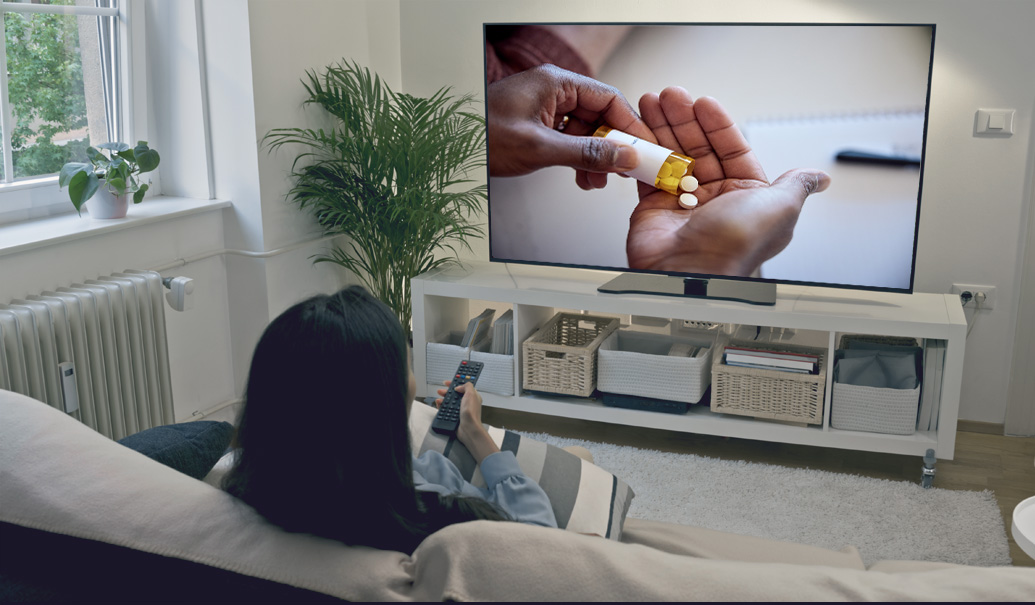Prepare for your case interview
Case interviews provide a sneak peek into the work and impact you can have at ZS. Grab a notebook and explore this practice case to test your ability to analyze, strategize and innovate. Answers are complex and nuanced, so don’t worry about coming up with the perfect solution. We are looking to see how you approach the problem, create a plan, incorporate feedback and uncover new ways of thinking. The format of cases will change in live interviews, but these examples should give you a high-level idea of what you can expect.
Situation description
Our client, Consumer Goods Company (CGC), is one of the main consumer goods companies in the U.S. Its skincare division has been focused on its best-selling sunscreen product, Summertime Sunscreen (Product A), which holds 2% of the U.S. sunscreen market share.
CGC recently developed a new formulation of sunscreen, Product B, and is planning for launch.
Question #1
What factors might CGC consider, and what questions must CGC answer while preparing to launch Product B?
Reveal answer
Company and product
1. What is Product B? How is it different from Product A?
2. What is the value proposition for Product B?
3. What other goods does CGC promote?
4. Should Product B launch under “Summertime Sunscreen” branding or a new brand name?
Competition
1. Which products are competing with Product A?
2. Which products will compete with Product B? How might this differ from Product A?
3. Will Product A and Product B compete against each other? What is the risk of cannibalization?
Customers
1. Who are the current customers for Product A?
2. Who are the potential customers for Product B?
Current market context
1. Overall, how large is the sunscreen market?
2. What are the trends within the sunscreen market?
3. What is the demand for Product A? Product B?

If you want to dive deeper, additional factors that may be important to consider include:
Stakeholder considerations
1. Aside from the consumer, who else is a stakeholder for Product B?
2. Is the person who purchases the sunscreen the same person who uses the sunscreen?
Co-positioning
1. Can Product A and Product B complement one another?
Macroeconomic factors
1. How are external economic factors (inflation, consumer spending, etc.) changing customer shopping habits?
Question #2
The client sent you some product information and some market research results. How does this information inform how to market Product B?
Reveal answer
Product A has high SPF and attributes like “reef-safe” that make it ideal for locations like beaches. User feedback confirms that this is indeed where the product is being used. Product B’s attributes are not as specific, and qualities like “oil-free” suggest it may be more appropriate for everyday use.
From this, we can conclude that Product A and Product B are likely to meet different market needs and may also be marketed to different consumer segments. Cannibalization is not a major concern.
Product B will be a premium product, since it is about four times more expensive than Product A and sells for about four times the price. CGC will need to consider whether current consumers of Product A may also purchase Product B.
It seems that placement and promotion for Product A occurs near beaches. CGC will need to consider new channels through which to promote Product B given the different need it serves.
Furthermore, “Summertime” suggests that promotional efforts are focused on outdoor and warm-weather activities. Since Product B serves a different purpose, it may need to be marketed under a different brand name.

You may also consider how the two products would be positioned:
1. It could be worth exploring a way for Summertime Sunscreen and Product B to complement one another in a way that is advantageous for CGC overall, while minimizing cannibalization (e.g., Summertime Sunscreen for the body and Product B for the face).
2. However, consumers may have strong associations with the “Summertime” brand, and marketing a different type of product under the same brand may create conflicting messages.
Question #3
The client just shared some additional market research. Based on this information, which customer segments would you recommend for Product B?
Reveal answer
1. Nonbinary (ages 18-29): This is one of the fastest-growing segments and 25% use sunscreen multiple days a week.
2. Nonbinary (ages 30-64): This is a steady but large segment and the majority at least occasionally uses sunscreen. Caution: Check if enough research has been done for nonbinary segments to ensure marketing efforts can reach this segment and resonate with them.
3. Women (ages 30-64): This is the largest segment of regular users, with a high percentage of daily users and a growing market. This age group may also have more disposable income compared to younger cohorts. From research, women heavily use Summertime Sunscreen at the beach. Consider how brand associations may play a role as you promote Product B.
4. Women (ages 18-29): This is one of the largest groups of daily sunscreen users who have one of the highest daily user rates. This may be a crowded market, given that many are already in the habit of wearing sunscreen every day.
5. Men (ages 30-64): This group has a high portion who never use sunscreen relative to other potential groups and usage has not been growing at the same pace as some of the other segments.
6. Men (ages 18-29): Although the majority are occasional users, the user base is seeing rapid growth. Consider at what points this market will become saturated and when the growth rate might slow.

Below are additional questions you might ask when selecting a segment:
1. What is driving product growth among these consumers?
2. What does the competition look like in this segment? What role does brand loyalty play? Is it common to purchase multiple types of sunscreen?
3. What might phased targeting look like? Who might be a core target market for launch, and how might CGC broaden to a larger market over time?
Question #4
Based on your strategy and information from previous questions, what profit can you anticipate for Product B in the U.S.?
Reveal answer
We can calculate anticipated profit coming from a market segment. Below is the calculation for young men (aged 18-29) in the U.S.:
53M people aged 18-29 in the U.S.
Assume men make up half of the population in this age group.
53M people aged 18-29 in the U.S. / 2 = ~27M men aged 18-29 in the U.S.
Based on market research, 26% of men 18-29 regularly use sunscreen (2025 estimate).
Assume “occasional” sunscreen users buy Product B infrequently and are negligible.
27M * 26% = 7M men aged 18-29 regularly using sunscreen.
Assume CGC can capture a 2% market share with Product B, based on the current market share.
7M * 2% market share = 140,000 men aged 18-29 buying Product B.
Profit per product = $24.99–$9.99 = $15.
Assume Product B is purchased once per year.
$15 * 1 per year * 140,000 men = ~$2.1M profit annually.

Pressure test your assumptions and evaluate how your answers will change. Two examples:
1. Alternative assumption: CGC may only capture 1% of the market.
2. Alternative assumption: Product B is purchased twice per year, on average.
You might also consider how fixed costs, like advertising, affect your calculation.
Question #5
Based on the consumer segment you selected, walk through how you would identify the appropriate marketing and sales channel(s) to reach this consumer segment.
Reveal answer
Below are some methods to determine which channels to use:
Evaluate the existing channels used by CGC, considering both brick and mortar and online channels:
1. What sales channels does Summertime Sunscreen (Product A) currently use? (e.g., grocery stores, drugstore, beauty stores, mall kiosks)
2. Where is advertising currently taking place? (e.g., online banner ads, billboards, magazines)
3. What digital marketplaces are being used? (e.g., social media direct shop options)
Review the customer journey to seek leverage points:
1. Develop a hypothesis about how your segment learns about products (e.g., dermatologists), makes purchases (e.g., social media direct shop options) and uses SPF.
2. Where within this journey are there opportunities for CGC to encourage behavior change?

Some additional considerations include:
Stakeholder interactions beyond the end user
1. The person buying the sunscreen may not be the same person who uses the sunscreen. Consider what channels might be needed to reach the “buyer” rather than the “end user.”
How location aligns with product attributes and brand
1. Will a high-end product need to be in different stores and locations than a less expensive product?
2. How does seasonality play a role?
How multiple channels can work together
1. How can CGC use a multichannel strategy to move consumers toward making a purchase?
2. How might CGC use AI and technical capabilities to enable a multichannel strategy?














